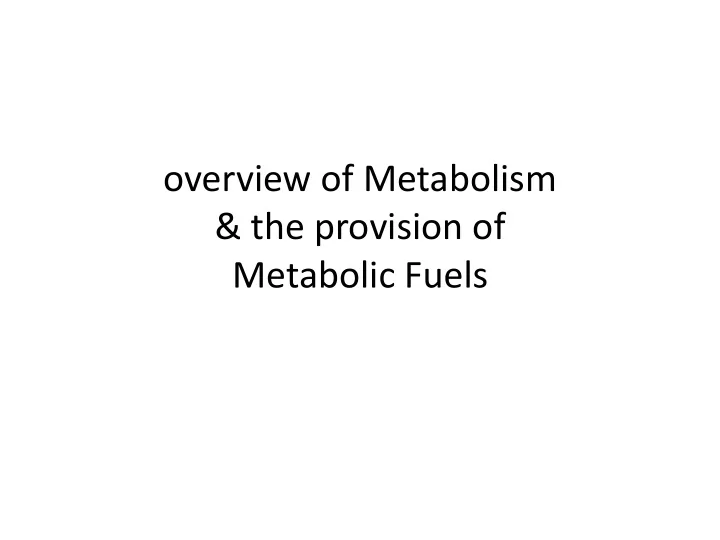

overview of Metabolism & the provision of Metabolic Fuels
Metabolism • Metabolism is the term used to describe the interconversion of chemical compounds in the body, the pathways taken by individual molecules, their interrelationships, and the mechanisms that regulate the flow of metabolites through the pathways. • Metabolic pathways fall into three categories. (1) Anabolic pathways. (2) Catabolic pathways. (3) Amphibolic pathways.
Outline of the pathways for the catabolism of carbohydrate, protein, and fat. all these pathways lead to the production of acetyl-coA, which is oxidized in the citric acid cycle, ultimately yielding ATP by the process of oxidative phosphorylation.
• Overview of carbohydrate metabolism showing the major pathways and end products.
• Overview of fatty acid metabolism showing the major pathways and end products. Ketone bodies comprise the substances acetoacetate, 3- hydroxybutyrate, and acetone.
• Overview of amino acid metabolism showing the major pathways and end products.
• Transport and fate of major carbohydrate and amino acid substrates and metabolites. Note that there is little free glucose in muscle, since it is rapidly phosphorylated upon entry.
• Transport and fate of major lipid substrates and metabolites. (FFA, free fatty acids; LPL, lipoprotein lipase; MG, monoacylglycerol; TG, triacylglycerol; VLDL, very low density lipoprotein.
• Intracellular location and overview of major metabolic pathways in a liver parenchymal cell. (AA →, metabolism of one or more essential amino acids; AA ↔, metabolism of one or more nonessential amino acids.
CLINICAL ASPECTS • Cachexia • diabetes mellitus • ketoacidosis
Recommend
More recommend